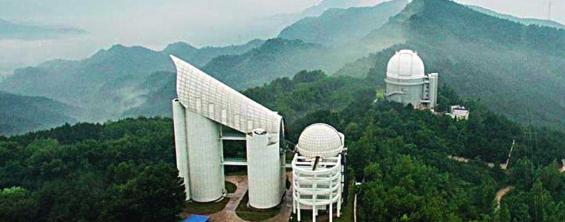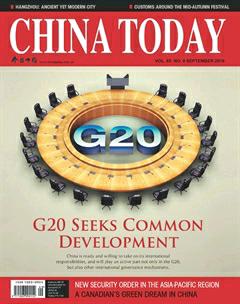Sci-Tech
Spectroscopic Data on 7 Million Stars
A Chinese telescope has collected data on over 7 million stars, exceeding the sum of all existing spectroscopic data to date on stars and making it the worlds largest database in the field.
The Guo Shoujing Telescope, named after a 13th-century Chinese astronomer, is operated by the National Astronomical Observatories under the Chinese Academy of Sciences (CAS), which recently released the findings.
The telescope has been in use since 2012. It is the worlds first large-area telescope that can observe the spectra of 4,000 stars at one time.
Astral spectra can relay key information, such as a stars state of motion, temperature, mass, and chemical composition, according to Hou Yonghui, an astronomical researcher with the CAS.
“Data is paramount in astronomical studies,” said Liu Chao, a fellow researcher with the national observatories. The data gathered by the Guo Shoujing Telescope has led to a number of scientific discoveries.
In 2014, scientists used the telescope to discover a hypervelocity star. Hypervelocity stars travel at super-high speeds to achieve escape velocity from the gravity of a galaxy.
The discovery of dozens of hypervelocity stars is expected to follow this latest data release, according to astronomers. The telescope also provides data for measuring the mass of “dark matter,” a critical concept in theoretical cosmology. With a larger database available now thanks to the telescope, measurements of the mass of “dark matter” could become more accurate.
Supercapacitor Tram Rolled off
Chinas first independently designed supercapacitor tram rolled off the production line in central Chinas Hunan Province on August 1.
The tram uses supercapacitor energy storage to operate without external wires, can fully recharge during a 30-second stop and run for 3 to 5 km, according to Engineer-in-Chief Suo Jianguo with CRRC Zhuzhou Electric Locomotive Co., Ltd. The tram carries up to 380 passengers, and travels at 70 km per hour. It also uses a lowdeck design that enables easier boarding for children, pregnant women, and the elderly.
“This is the first time that all the technology – even the spare parts – has been independently sourced from within China,”said Suo. The tram runs on clean energy and can reuse 85 percent of the energy generated from braking.

First Quantum Satellite
China successfully launched the worlds first quantum satellite Quantum Experiments at Space Scale (QUESS) from the Jiuquan Satellite Launch Center in northwestern Gobi Desert at 1:40 am on August 16. The 600-plus-kilogram satellite will orbit the Earth once every 90 minutes after it enters a sunsynchronous orbit at an altitude of 500 kilometers.
In its two-year mission, QUESS is designed to establish “hack-proof” quantum communications by transmitting uncrackable keys from space to the earth, and provide insights into the strangest phenomenon in quantum physics – quantum entanglement.
Quantum communication boasts ultrahigh security, as a quantum photon can neither be separated nor duplicated. It is hence impossible to wiretap, intercept or crack the information transmitted through it.
With the help of the new satellite, scientists will be able to test quantum key distribution between satellite and earth stations, and conduct secure quantum communications between Beijing and Urumqi, capital city of Xinjiang.
QUESS, as planned, will also beam entangled photons to two earth stations, 1,200 kilometers apart, in a move to test quantum entanglement over a greater distance, as well as test quantum teleportation between earth stations in Ali, Tibet, and itself.
The satellite is nicknamed “Micius,” after the fifth century BC Chinese philosopher and scientist credited as the first person in human history to conduct optical experiments.
Huge Potassium Deposit Discovered
A huge deposit of potassium, a vital strategic ore resource that China desperately needs for agriculture, has been discovered in Chinas northwestern province of Qinghai, the Ministry of Land and Resources(MLR) announced on July 29.
After three years of exploration, a preliminary prospecting expedition in the western part of the Qaidam Basin located more than 156 million tons of potassium chloride, according to the MLR.
The MLR called the discovery a “milestone” as China currently imports 70 percent of its potassium. Potassium is used as fertilizer for around 30 million hectares of farmland in China, especially in southern grain production provinces such as Anhui, Fujian, Hubei, Hunan and Jiangsu. About six million tons of potassium is imported for fertilizer every year. Canada, Russia, and Belarus are endowed with and produce 60 percent of the worlds potassium fertilizer resources.

